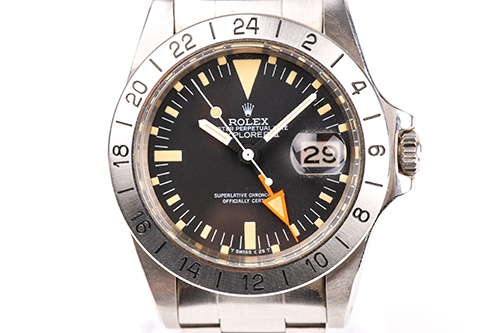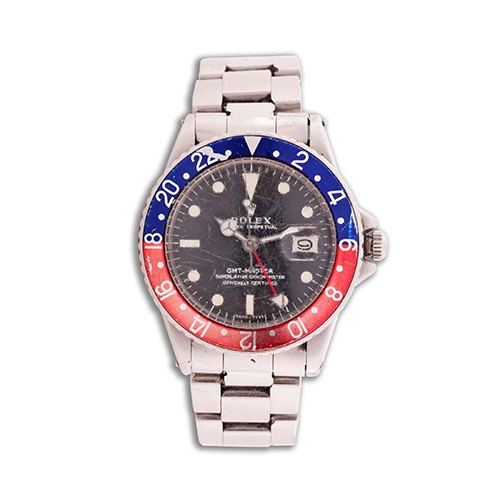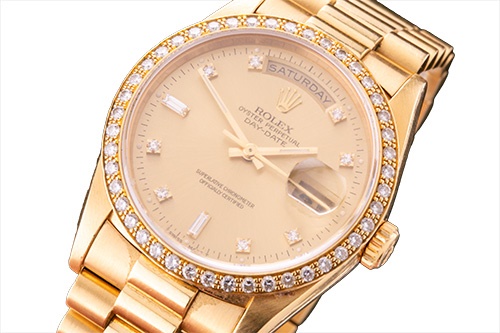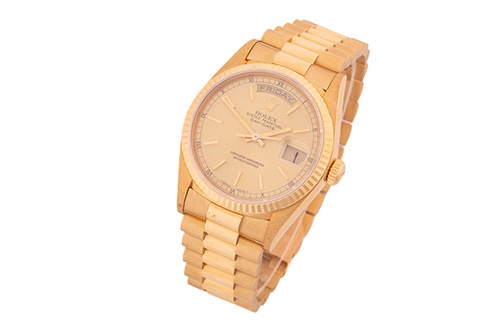How to tell if a Rolex is real
Authenticity is crucial to establishing the true value of your Rolex
If you're in the market for a Rolex, this article will help you to discover simple ways to check the authenticity of a Rolex yourself.
07/09/2022
In days gone by, identifying a fake Rolex was fairly straightforward. It wasn't hard to recognise that a 'genuine' Rolex selling at a ludicrously low price, with a date that never changed, or parts that would come loose and fall off at the touch of a finger, was clearly a fake.
Unfortunately, in recent years the counterfeit Rolex market has become much more sophisticated. Manufacturers in the Far East have become so advanced in their ability to create carbon copies of luxury items, that they are now starting to produce copies of the machinery that make them. So, not only can the exterior of a Rolex watch be mimicked but now also the Swiss technology used to make them.
For this reason, it has become more important than ever to be able to decipher a real Rolex from a fake when buying second-hand. However, it can be a difficult process if you don't know what you're looking for. Here we offer you some guidance to help you get started.
A 1982 Rolex Oyster Perpetual Date Explorer.
Serial Number
This is the best place to start when checking to see if your Rolex is genuine. You should first look to see if your watch even has a serial number to begin with, this is the first giveaway as a lack of serial number is common in poorer quality replicas. Note that serial numbers on models that predate 2005 are located between the lugs at 6 o’clock (lugs are the projections that secure the watch face to the strap). With models made between 2005 to 2008 it can also be found on the rehaut as well as between the lugs (the rehaut is the ring between the watch face and the bezel, and often has ROLEX etched onto it). Those dated from 2008 onwards will only have it on the rehaut.
If the original watch paperwork is available when you buy, the easiest way to check its authenticity is to check the serial number matches the sequence stated in the documents. If the documents or certifications aren’t available, you can look at the physical engraving of the number on the watch. A genuine Rolex has its serial number engraved smoothly and seamlessly in the metal, whereas a fake is usually etched with acid and has an uneven appearance.
The seconds hand
This is another very easy way to tell if a Rolex has been faked. Rolex watches are famously built with such high-quality mechanisms that the second hand gives the illusion of gliding rather than ticking. This level of craftmanship is hard for counterfeit manufacturers to achieve, so if you see or hear a ticking on your Rolex, it is most definitely a fake.
A 1972 Rolex GMT Master 'Pepsi'.
Bezel
Looking closely at the bezel and the way the numbers have been applied, you should be able to see the quality clearly. The numbers on a real Rolex are applied in platinum by physical vapour deposition (PVD), leaving behind a smooth and even finish. A fake on the other hand, will usually have its numbers painted on and you will notice a shiny and uneven finish.
The Case Back
A smooth metal case back is a universal feature unique to all Rolex watches, minus a few rare vintage models that were made in the 1930s. With clear exhibition case backs being a popular design feature for many other luxury watch brands, counterfeit Rolex manufacturers often mistakenly put them on counterfeits. So, a Rolex with a clear case back is most probably fake.
Another small detail that many people forget, is that also unlike most other luxury watches, a genuine Rolex has no engravings on the case back at all. This is a detail many forgers also miss. Rolex prefer their designs to look sleek and classic, and so opt for a simple, smooth metal finish. To the untrained eye, a Rolex with an engraved trademark on the back wouldn't appear unusual, but don’t be fooled. Any sign of case back engravings (with a few rare exceptions such a custom orders for Comex and military issue watches) and you know you're not dealing with the real thing.
The Crystal and Cyclops
The glass covering the watch face is known as the 'crystal'. A subtle detail, but if you look closely at a genuine Rolex watch crystal, you can see it is sloped around the edges, whereas the glass on a fake is slightly more squared off. You might also be able to feel this subtle difference if you run your finger around the circumference of the glass. Watches from 2001 onwards also have a tiny laser etched Rolex Crown on the glass at the 6 o'clock position.
The ‘cyclops’ is the little magnifying window on the watch face that displays the date. Without the high-quality Swiss technology used to make real Rolex watches, it is almost impossible for a fake to achieve the same crystal-clear magnification and anti-reflective coating. So, always look out for a glare or blurred magnification on the cyclops. The date should show clearly and fill the cyclops.
A Rolex Day-Date in 18ct yellow gold.
Weight
As you know, a Rolex watch has a lot of extremely high-quality mechanisms packed away inside it, and this should be clear from its weight. If you are not used to wearing watches, you may not notice the heavy weight of a Rolex but if you compare it to any other watch, the difference should be obvious straight away.
General design obscurities and quality
Finally, natural wear and tear is to be expected when buying a second-hand watch, but always keep an eye out for anything that looks like a manufacturing fault. it is always worth examining closely to detect any inconsistencies in the general design or quality of the watch. The technology used to create genuine Rolex watches is so advanced that every detail should look seamless. Any sort of misalignment or irregularity should give it away. Use magnification to look closely at the etching and if it looks remotely rough or uneven, then it is most likely a fake.
An unworn Rolex Daydate 18038 in 18ct yellow gold.
Whilst these are simple ways you can check the authenticity of a Rolex yourself, the best thing you can do when buying second hand is to from a reputable source. At Dawsons, we have a dedicated team of watch experts who take time to thoroughly examine and check the provenance of every watch that comes through our door, and every watch is checked against The Watch Register to ensure it is not stolen. We strive to build strong and long-lasting relationships with our clients, so that you can buy and sell with confidence.
Read more...
Six reasons why collectors love Rolex watches
Do you have a Rolex you are keen to sell?
We market to a global audience of collectors who are eager to bid for the most desirable luxury watches.
Any submission you make will be analysed carefully and if we feel we can sell your watch, we will gladly offer you an auction estimate.
Click here to see some of the many Rolex watches to have been sold by the team at Dawsons.
Please do get in touch, we would love to hear from you:



